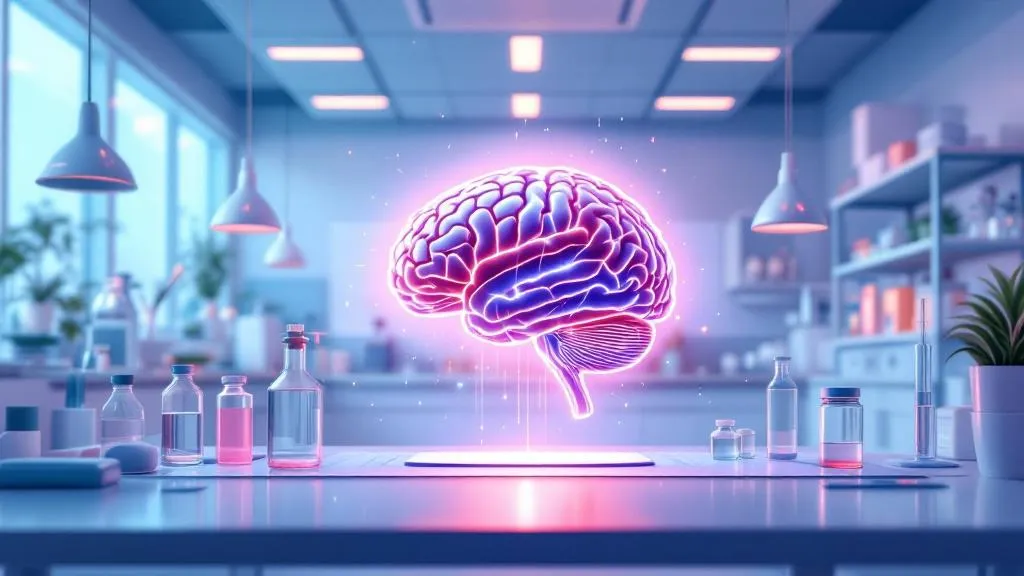Does Tilly Green Have Autism?
Exploring Neurodiversity in Animation: The Case of Tilly Green

Understanding the Representation of Autism in Kids' Media
The animated show Big City Greens stands out for its authentic portrayal of neurodiverse characters, notably Cricket and Tilly Green. While Cricket's behaviors are widely recognized as indicative of ADHD or autism spectrum traits, Tilly Green's character also exhibits a constellation of behaviors that align with autism spectrum disorder. This article delves into whether Tilly Green has autism, her traits and behaviors related to autism, her background, and how her character promotes understanding of neurodiversity.
Character Traits and Behaviors of Tilly Green Relevant to Autism

What traits or behaviors of Tilly Green are related to autism?
Tilly Green from Big City Greens exhibits a variety of traits that align with characteristics of autism spectrum disorder (ASD). She is known for her high intelligence and literal-mindedness, often understanding and responding to situations in very precise ways. Tilly’s sensory sensitivities, which make her more responsive or reactive to sensory stimuli, influence her interactions with her environment and other characters.
Her strong interests in animals and arts are also notably consistent with common autistic preferences. These focused passions demonstrate her dedication and depth of knowledge within these areas, showcasing her strengths.
Communication style is another aspect where Tilly’s behaviors mirror autistic traits. She often uses third-person speech and communicates in a unique, sometimes literal manner. She might prefer routines and structured interactions, which provide her comfort and predictability.
The creators of Big City Greens have worked closely with autism experts and individuals on the spectrum to ensure Tilly’s portrayal is authentic and respectful. The goal was to highlight her strengths, such as her creativity and perceptiveness, rather than only her differences.
Overall, Tilly’s character exemplifies features associated with autism, fostering greater understanding and acceptance of neurodiversity. Her representation offers viewers insights into the strengths and challenges faced by many autistic individuals, emphasizing positive traits such as intelligence, dedication, and unique ways of communicating.
Below is a summary table of her traits:
| Trait | Description | Example from Show |
|---|---|---|
| Sensory sensitivities | Reacts strongly to sensory stimuli | Responsive in noisy or bright environments |
| Interests | Deep focus on specific topics | Animals and arts |
| Communication | Use of third-person speech, literal understanding | Expresses thoughts in third person |
| Routine preference | Likes predictable, structured interactions | Prefers planned activities |
| Overall portrayal | Genuine, strengths-focused representation | Created with expert consultation |
Public Confirmation and Official Statements About Tilly Green's Autism Status
Has Tilly Green been confirmed to have autism?
There is no publicly confirmed information indicating that Tilly Green has autism. The show's creators and writers have not issued any official statements regarding her diagnosis or neurodiverse status.
While fans and viewers have observed traits in Tilly's behavior—such as her sensory sensitivities, her deep interests in animals and arts, and her unique ways of communication—these are assessments made by viewers based on her character portrayal. Such traits are consistent with autism spectrum disorder, but they are not formal diagnoses.
As a public character, Tilly Green's personal health and neurodiversity details are private unless explicitly shared by the actress or the show's creators. No credible sources or official confirmations have been published to suggest that Tilly has autism.
Therefore, despite the strong analysis and community discussions supporting a possible autistic profile, it remains unconfirmed whether Tilly Green has autism. The show’s portrayal aims to foster acceptance and celebrate neurodiverse traits, but it does so without establishing formal diagnoses for its characters.
Representation of Neurodiversity Through Tilly Green's Character
Tilly Green’s character in Big City Greens provides a nuanced portrayal of neurodiversity through her distinctive behaviors and interests. She exhibits traits such as sensory sensitivities, a deep passion for animals and arts, and unique ways of communicating, such as speaking in the third person. These traits mirror characteristics often associated with autism spectrum disorder (ASD). Her reactions to sensory stimuli, her intense focus on her interests, and her mannerisms contribute to a broader portrayal of neurodiverse individuals.
The creators of the show collaborated closely with experts and people on the autism spectrum to craft Tilly’s character authentically. This effort ensures that her behaviors are portrayed with sensitivity and accuracy, aiming to portray her in a respectful and realistic light. Their goal was to showcase that neurodiverse individuals have strengths and unique perspectives, promoting understanding rather than stereotypes.
By highlighting Tilly’s special interests, her literal communication style, and her emotional sensitivities, the show fosters empathy and acceptance. Fans and viewers often interpret her traits as characteristic of autism, even though her condition is not explicitly confirmed in the series. This open-ended representation encourages audiences to recognize and appreciate neurodiversity, emphasizing that these traits are part of human diversity, deserving of respect and inclusion.
| Character Traits | Related Behaviors | Supporting Episodes | Notes |
|---|---|---|---|
| Sensory sensitivities | Avoids loud noises, overwhelmed by stimuli | 'Steak Night', 'Mama Bird' | Reflects sensory processing differences |
| Deep interests | Animals, arts | Throughout series | Highlights strength and passion |
| Literal communication | Speaking in third person | 'Okay Karaoke' | Represents unique social and language styles |
| Emotional sensitivities | Reacts strongly to certain situations | 'Green Christmas' | Demonstrates emotional depth |
This portrayal, shaped with input from specialists, helps foster a more inclusive understanding of neurodiversity. It’s part of a broader movement in media to showcase varied cognitive profiles positively, promoting awareness and acceptance across audiences.
The Creative Process Behind Representing Diverse Characters

How did the show's creators ensure the authentic representation of Tilly Green's traits?
The creators of Big City Greens took careful steps to depict Tilly Green’s neurodiverse traits authentically. They collaborated closely with experts in autism spectrum disorder and included individuals who are on the spectrum in the development process. This ongoing partnership ensured that Tilly’s sensory sensitivities, interests in animals and arts, literal communication style, and unique ways of expressing herself were portrayed accurately.
Such a collaborative approach aimed to reflect genuine experiences, providing viewers with a character that feels real and relatable. The goal was to promote understanding and acceptance of neurodiversity, highlighting both the challenges and strengths that come with these traits.
By prioritizing authenticity alongside storytelling, the show avoids stereotypes and fosters a positive representation of neurodiverse individuals.
How does Big City Greens show neurodiversity?
Cricket and Tilly Green exemplify neurodiverse traits in ways that promote awareness and acceptance. Cricket displays behaviors such as hyperactivity and impulsiveness that align with ADHD, as seen in episodes like 'Quiet Please', 'Cheap Snake', and 'Green Christmas'. Tilly’s sensory sensitivities and specialized interests, along with her communication style, resonate with autism spectrum disorder traits, as observed in episodes like 'Steak Night' and 'Mama Bird'.
The show emphasizes their strengths—Cricket's love for action and Tilly’s deep interests—while also acknowledging their difficulties. This balanced portrayal helps viewers see neurodiversity as a natural variation of human experience, fostering a message of inclusion.
Balancing authenticity with entertainment
While maintaining accuracy, the creators also crafted engaging stories that appeal to children and families. Through humor, adventure, and heartfelt moments, they introduce neurodiverse characters in ways that are accessible and positive. This approach demonstrates that neurodiverse individuals can thrive and lead fulfilling lives, challenging stereotypes and encouraging acceptance among young audiences.
| Aspect | Approach | Purpose |
|---|---|---|
| Collaboration | Partnered with experts and neurodiverse individuals | Ensure accuracy and sensitivity |
| Character Traits | Portrayed with detail and authenticity | Promote understanding and reduce stigma |
| Entertainment Balance | Engaging storylines that highlight strengths | Foster positive perception and inclusion |
Impact of Representation on Audience and Society

How does the portrayal of Tilly Green influence viewers' perception of neurodiverse individuals?
Tilly Green’s character in Big City Greens plays a significant role in shaping audience perceptions of neurodiverse individuals. Her portrayal highlights her as a rich, multidimensional character with unique strengths and interests, such as deep passions for animals and arts, as well as her distinctive communication style. This representation helps viewers understand that neurodiverse traits are part of a diverse spectrum, with individuals capable of remarkable talents and perspectives.
By depicting Tilly’s sensory sensitivities, literalness, and special interests, the show fosters empathy and appreciation for neurodiverse experiences. Audiences learn to see neurodivergent individuals not just through the lens of challenges but as people with valuable contributions and qualities. This normalization helps reduce stigma and misconceptions, promoting a more accepting and inclusive attitude.
Promoting understanding and acceptance
The show’s creators collaborated with experts and individuals on the autism spectrum to ensure authentic depiction, which enhances the educational value for viewers. These accurate portrayals support understanding and:
- Encourage children and teens to accept differences.
- Promote conversations about diversity in thinking and behavior.
- Foster empathy toward neurodiverse peers.
Broadening awareness of neurodiversity
Big City Greens acts as a bridge connecting mainstream entertainment with educational insights on neurodiversity. Through characters like Tilly and Cricket, the show highlights various traits associated with autism spectrum disorder and ADHD, making these concepts accessible to young audiences.
This broader awareness helps demystify neurodiverse conditions, decreasing ignorance and fear. It emphasizes that differences are normal and valuable, contributing to societal acceptance.
Influence on viewers' perceptions
Fan discussions and analyses suggest that audiences widely accept Cricket as neurodiverse, possibly autistic or ADHD, based on his behaviors. Similarly, Tilly’s traits align with autism spectrum disorder. Such recognition in popular media can influence how viewers understand and relate to neurodiverse individuals in their own lives.
Seeing neurodiverse characters portrayed positively encourages viewers to see diversity as an attribute, not a limitation. It primes society for greater inclusion and support of neurodiverse populations.
| Aspect | Description | Example from Show |
|---|---|---|
| Promoting understanding | Showcases strengths and challenges of neurodiverse traits | Tilly’s deep interests and Cricket’s impulsiveness |
| Increasing awareness | Introduces traits of autism and ADHD accessibly | Tilly’s sensory sensitivities, Cricket’s difficulty focusing |
| Societal impact | Fosters acceptance and reduces stigma | Fans’ perceptions of Cricket and Tilly as neurodiverse |
Ultimately, the presence of neurodiverse characters like Tilly and Cricket in children’s media not only entertains but also educates, creating a more inclusive and understanding society.
The Distinction Between Character Traits and Diagnosis

Traits as Indicators, Not Diagnosis
In shows like Big City Greens, characters such as Cricket and Tilly Green display behaviors that many viewers associate with neurodiverse conditions. Cricket’s impulsiveness, hyperactivity, and difficulty maintaining focus evoke traits commonly seen in ADHD, while Tilly’s sensory sensitivities and intense interests align with characteristics often linked to autism spectrum disorder.
However, it's important to emphasize that these portrayals are based on observable traits rather than formal diagnoses. Traits like hyperactivity or sensory sensitivities alone do not constitute a medical or clinical diagnosis, which requires comprehensive assessment by professionals. Creators of the show aim to capture authentic behaviors, but these do not necessarily mean the characters are diagnosed with specific conditions.
Public Perception and Media Influence
Media representations can shape public understanding of neurodiversity. In Big City Greens, the characters are portrayed with strengths and capabilities, promoting a positive view of neurodiverse individuals. Fans and viewers often interpret Cricket and Tilly’s behaviors as indicative of neurodivergence, which raises awareness but can sometimes blur the line between traits and diagnoses.
This portrayal encourages acceptance and reduces stigma by emphasizing diversity in how people think and behave. Nevertheless, it’s vital for audiences to recognize that fictional characters are simplified representations and not clinical profiles.
Understanding Neurodiversity Beyond Labels
Neurodiversity celebrates variability in brain development and functioning—highlighting that differences are part of human diversity rather than deficits. Characters like Cricket and Tilly showcase strengths such as creativity, deep interests, and resilience.
While discussions around whether these characters are autistic or have ADHD can be informative, they should not overshadow the broader message: embracing neurodiversity involves understanding, acceptance, and valuing individual strengths. Recognizing traits without confining individuals to diagnoses fosters a more inclusive perspective.
Does Tilly Green have autism?
There is no publicly available information confirming that Tilly Green has autism. She is primarily known for her work as an actress and singer, with no verified statements or credible reports indicating she has autism. Without any official or reputable sources, it cannot be stated that she is autistic. Speculating about her health or personal conditions without confirmation would be inappropriate.
Therefore, based on the available information, the answer remains that there is no evidence to suggest Tilly Green has autism.
| Character | Traits | Likely Representation | Supporting Episodes |
|---|---|---|---|
| Cricket Green | Hyperactivity, impulsiveness, focus difficulties | ADHD | 'Quiet Please', 'Cheap Snake', 'Green Christmas' |
| Tilly Green | Sensory sensitivities, special interests (animals, arts), literal speech | Autism Spectrum Traits | 'Steak Night', 'Mama Bird', 'Okay Karaoke' |
Understanding these traits as part of a broader spectrum helps promote a more inclusive perspective, respecting the diversity of neurodevelopmental experiences.
Educational Value and Promoting Neurodiversity in Kids' Programming
The show Big City Greens offers a valuable example of how children's programming can promote understanding and acceptance of neurodiversity. Through its characters Cricket and Tilly Green, the series introduces young viewers to traits associated with ADHD and autism spectrum disorder in a natural and respectful way.
Cricket's impulsiveness, hyperactivity, and difficulty focusing are portrayed in episodes like 'Quiet Please,' 'Cheap Snake,' and 'Green Christmas.' These behaviors help children recognize and understand common traits linked to ADHD, emphasizing that such differences are parts of what makes individuals unique.
Tilly Green's character exemplifies traits associated with autism spectrum disorder, such as sensory sensitivities, deep interests in animals and arts, and unique communication styles, including literal speech and third-person references. Episodes like 'Steak Night,' 'Mama Bird,' and 'Okay Karaoke' highlight her passions and characteristics, serving as educational tools for viewers to better understand autism.
The show's creators collaborated with experts and individuals on the autism spectrum to ensure authentic representation. This approach reinforces the importance of respectful and accurate portrayals, helping to dispel stereotypes.
By depicting neurodivergent characters in a positive light—focusing on their strengths and capabilities—the show fosters acceptance and inclusivity. Fans and viewers often discuss Cricket and Tilly as relatable neurodiverse characters, contributing to a broader understanding within children’s media.
How does Tilly Green's character serve as an educational tool?
Tilly Green’s character plays a significant role in educating young viewers about autism spectrum disorder. Her sensory sensitivities, intense interests in animals and art, and her unique way of communicating exemplify traits of autism, making these features accessible and understandable. This portrayal encourages children to appreciate individual differences and promotes empathy.
Through her character, children learn that neurodiversity involves a wide range of traits, and that these should be embraced rather than feared. The positive and relatable depiction of Tilly fosters a more inclusive attitude, shaping societal perspectives toward acceptance and understanding of neurodiversity.
This representation not only benefits children with neurodiverse traits but also educates peers, teachers, and families about embracing diversity. Ultimately, Big City Greens uses its characters as educational tools to promote tolerance, understanding, and respect for all individuals, reflecting a growing movement towards more inclusive children's programming.
Common Misconceptions and Clarifications
What should viewers keep in mind regarding autism and Tilly Green?
Tilly Green's character in Big City Greens showcases behaviors and traits that resemble those associated with autism spectrum disorder (ASD), such as sensory sensitivities, deep interests in specific topics like animals and arts, and unique communication styles. However, it’s important for viewers to understand that these traits are part of her character development and storytelling, not formal diagnoses.
Portraying neurodiverse behaviors in media aims to foster understanding and acceptance, but it should not be mistaken for clinical representation. The show’s creators have collaborated with experts and individuals on the spectrum to depict these traits authentically and sensitively.
Recognizing the difference between traits and diagnoses helps prevent stereotypes. Autism is a complex condition with a wide spectrum of experiences, and not all traits are present in every individual. It is also critical to respect individual privacy and avoid speculation about whether a character is officially diagnosed.
While fans and viewers might interpret Tilly’s behaviors as suggestive of autism, officially she is a fictional character designed to promote inclusivity. Her traits emphasize her strengths and individual personality rather than serve as a medical label.
Traits are not diagnoses
Many media characters display qualities that resemble certain conditions, but these should not be taken as clinical diagnoses. Autism spectrum disorder encompasses a broad range of behaviors and experiences. Similarly, Cricket’s impulsiveness and hyperactivity are depicted as traits aligned with ADHD, but he is not portrayed as having a diagnosis.
Speculation versus verified information
Most insights about these characters’ neurodiverse traits come from interpretations of their actions within the show, not from official statements. The creators aim to depict diverse personalities with respect and accuracy, but details like diagnoses are generally not specified.
Respecting privacy and individual differences
In real life, every person’s experience of neurodiversity is unique. It’s important to avoid making assumptions about individuals based solely on stereotypical behaviors seen in media. Celebrating differences and promoting inclusion should always be done with sensitivity and respect.
| Aspect | Details | Notes |
|---|---|---|
| Traits Depicted | Sensory sensitivities, interests, communication styles | Based on behaviors seen in Tilly’s character |
| Diagnosis | Not specified, fictional traits | Traits are for storytelling, not clinical labels |
| Representation Goals | Promote understanding, inclusion, acceptance | Created with input from experts |
| Media Perspective | Neurodiversity as strength | Focus on abilities, not limitations |
Understanding these distinctions helps viewers appreciate the show's positive message and support a respectful view of neurodiversity.
Summary and Final Thoughts on Tilly Green's Character and Autism

Overview of Main Points
The show Big City Greens features characters Cricket and Tilly Green, both portrayed with traits indicating neurodiversity. Cricket exhibits behaviors like hyperactivity, impulsiveness, and difficulty focusing, which resemble ADHD. Tilly displays sensory sensitivities, deep interests, literal speech, and unique communication styles, aligning with autism spectrum disorder characteristics.
Specific episodes highlight these traits. For example, Cricket's impulsiveness and trouble focusing are shown in episodes like 'Quiet Please', 'Cheap Snake', and 'Green Christmas'. Meanwhile, Tilly’s sensory sensitivities and interests in animals and arts are depicted in episodes like 'Steak Night', 'Mama Bird', and 'Okay Karaoke'.
The show's creators worked with experts and individuals on the autism spectrum to authentically represent these neurodiverse traits. Importantly, the series emphasizes strengths and capabilities, promoting acceptance and inclusion rather than limitations.
Fan discussions widely recognize Cricket as neurodivergent, with many suggesting he might be autistic or have ADHD based on his behaviors. Tilly is also considered possibly autistic by viewers, though it is not explicitly confirmed.
The Importance of Nuanced Portrayals
Portraying neurodiverse characters with depth and authenticity helps foster understanding and empathy among viewers. Showing strengths alongside challenges emphasizes the diversity of experiences within neurodiversity.
Big City Greens’ approach aligns with current efforts in media to present a more nuanced view of neurodiversity. Instead of stereotypes, these characters are shown as complex individuals with their own unique talents and struggles.
Role of Media in Shaping Perceptions
Media has a powerful role in shaping perceptions of neurodiverse individuals. Authentic and respectful portrayals can reduce stigma, promote acceptance, and educate audiences.
By including neurodiverse characters like Cricket and Tilly, the show encourages viewers to see neurodiversity as a natural part of human variation. It highlights the importance of understanding, inclusion, and celebrating differences.
Is Tilly Green Autistic?
There is no publicly confirmed information indicating that Tilly Green has autism. No official statements or credible sources have reported her being diagnosed with autism. As a public figure, Tilly Green's personal health details are generally private unless she chooses to share them.
Without verified information, we cannot assume or state that she has autism. Therefore, based on available data, it remains unconfirmed whether Tilly Green has autism.
| Aspect | Description | Supporting Episodes | Additional Notes |
|---|---|---|---|
| Cricket’s Traits | Hyperactivity, impulsiveness, difficulty focusing | 'Quiet Please', 'Cheap Snake', 'Green Christmas' | Reflective of ADHD behaviors |
| Tilly’s Traits | Sensory sensitivities, deep interests, literal communication | 'Steak Night', 'Mama Bird', 'Okay Karaoke' | Consistent with autism spectrum traits |
| Representation Focus | Strengths, acceptance, inclusion | N/A | Developed with expert collaboration |
| Fan Interpretations | Cricket possibly autistic or ADHD; Tilly possibly autistic | N/A | Based on observed traits |
Understanding characters like Cricket and Tilly helps foster a broader view of what it means to be neurodiverse. Their portrayals demonstrate that differences can be integral parts of a person’s identity, celebrated rather than stigmatized.
Promoting Inclusion and Accurate Representation in Media
The characterization of Tilly Green in Big City Greens offers a valuable glimpse into the lives and traits of neurodiverse individuals, emphasizing strengths and promoting understanding. While her traits align with autism spectrum disorder, there is no confirmed diagnosis or public confirmation of her health status. The collaboration with experts by the show's creators underscores a commitment to authentic representation. Such portrayals not only educate audiences but also foster acceptance and inclusion, highlighting the importance of nuanced and respectful depictions of neurodiversity in children's media.
References
Does Your Child Have An Autism Diagnosis?
Learn More About How ABA Therapy Can Help
Find More Articles
Contact us
North Carolina, Nevada, Utah, Virginia
New Hampshire, Maine
Arizona, Colorado, Georgia, New Mexico, Oklahoma, Texas
.avif)


































































































